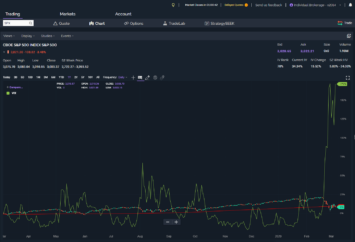Overcoming a trading loss is a little like overcoming grief. It’s a messy process that starts with shock and denial and ends up with you (begrudgingly) accepting the reality of your situation.
Your money is gone.
But because it happens so frequently, there is a wealth of wisdom that we can give you to help you recover from your loss. We can’t get your money back, but we can surely help you get your confidence back.
Here’s how to overcome trading losses in ten powerful steps.
1. Rip Off the Bandage
Listen, you’ve got a situation here that isn’t getting any better. Don’t keep adding onto your dying trade, thinking that you’ll end up turning a profit. This is a desperate move and one you should save for gambling houses (under supervision, of course). Cut your losses. You’re done.
2. Accept Responsibility
As Thom Yorke once sang, “You do it to yourself, you do, and that’s why it really hurts.” But as much as it hurts, blaming other people or predictable factors won’t get you anywhere. Instead of saying, “The news told me that the company was going to do excellent things,” admit that maybe you didn’t read your charts right and possibly fell victim to a pump-and-dump scam.
Don’t beat yourself up too hard, but certainly accept the responsibility.
3. Leave Emotions Out of It
Some of the best advice I ever received was to completely separate my emotions from my daily trading adventures. Why? Because when the trading’s good, it feels great. But when you experience a major loss, it really hurts. It hurts more than stubbing your toe. And when emotions get in the way of trading, it’s hard to recover.
Approach trading with pragmatism. Losses are a part of the trading life, not a personal affront. Shake it off, grab a drink if you have to, and regroup.
4. Take a Break
Of course, “try, try again” applies to trading, but you shouldn’t jump back in right away. When you allow yourself time to regroup after a loss, you’ll be able to see where you may have gone wrong. You may want to hold what you have left and watch trends for a couple of days before you buy or sell more stock. Take the time to improve your strategy.
5. Find the Lesson
You know that one family member who always tells you that your negative experiences are positive because you learned something? Well, we’re not sure that that glass-half-full philosophy applies to everything in life, but it does for trading.
Whether you’re a rookie or pro trader, you can never truly “perfect” the art of trading. It’s not that you don’t know what you’re doing, but rather that we can’t accurately predict the market’s volatility. So when you lose money, think about the loss as a learning experience as opposed to a failure.
For example, “I experienced a loss because of A, so next time I need to look out for B, so I can go ahead and do C.” This improves your strategy, knowledge-base, and turns a loss into a real-life lesson of what to do.
6. It’s Okay To Think That You Were Right
Just because you experienced a loss doesn’t mean you did something wrong. Sometimes we make the best decision for our situation, and we still get an unfavorable result. It’s part of the risk of trading. You may be certain that a move is 93% secure — and you should take that chance — but that still leaves a 7% chance that it’ll go wrong.
If you made a sound evaluation of your position, triple-checked potential variables, and had a valid reason to make the trade, you were probably right in making that trade. It just turned out wrong.
7. Evaluate Your Financial Position
Not everyone has a surplus of money to put towards trading. A major loss could mean that someone loses close to everything they have. Now, no gains are made without taking a risk, but you have to work smartly. If you’re a casual day trader and you decide to put half of what’s in your bank account into a trade and then lose it all, you’re going to be up the creek without a paddle.
Don’t rely on recovery to get your money back. Come back to the trade when you’ve got the money to put towards it and the expertise to finesse it.
8. Ease Back Into It
You don’t have to sheepishly return to trading the next day — there’s no shame involved in trading losses. It happens all the time. But you should ease back into it. Take smaller positions, make smaller profits. Doing so helps you keep what stocks you have left for trading and lets you test out new strategies without experiencing the massive loss you did in the first place.
In other words, lower your risk after a loss. You may be making smaller gains, but safer is sounder after being punched in the wallet.
9. Set a Stop Loss Order
Set a stop-loss order if you have difficulty self-regulating or aren’t good at easing into things. A stop-loss is an order you make through your broker to sell or buy stock when it hits a certain price. If you set your stop-loss high enough, you can significantly reduce the amount of loss you experience. Before you set the order, however, study up on what it entails.
10. Don’t Give Up
If you can recover from a loss, recover. The stock market isn’t going to stop; you can still make a profit. This won’t be your only loss, but your rebound could be your greatest victory.
Conclusion
If you are reading this, nursing a trading loss wound, I feel you. It is possibly one of the worst financial feelings ever. But even though you won’t get that money back, you can still make it back in the future. So chin up! This isn’t the end of the road for you yet.





